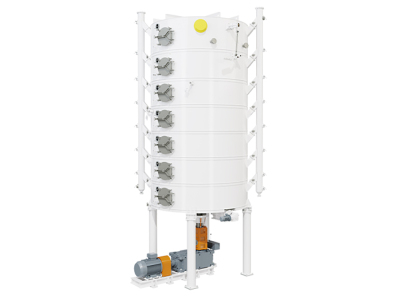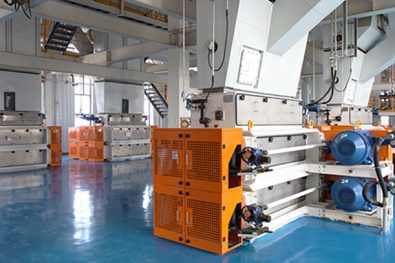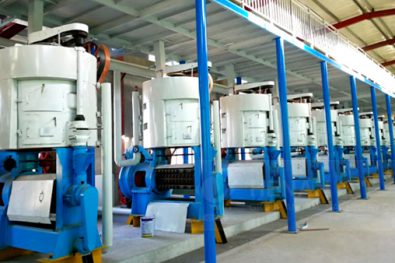
Vertical Cooker
A Vertical Cooker is another type of industrial cooker primarily used for heating or cooking materials in various processes, similar to a horizontal rotary cooker but with a vertical design.
1.Features
1. Continuous Operation: Vertical cookers are designed for continuous operation, making them suitable for medium to large-scale oil processing plants. They can handle large capacities while occupying relatively small space.
2. Heating Mechanism: The cookers use steam as the heat source. Each layer of the cooker has a steam jacket where indirect steam heats the materials.
3. Layered Structure: Typically, vertical cookers consist of 3 to 5 layers, each equipped with stirring devices to ensure uniform cooking. The layers are designed to allow for the gradual movement of materials from the top to the bottom, ensuring thorough cooking and moisture control.
4. Material Handling: The cookers are equipped with automatic charging and discharging systems. Each layer has access doors for maintenance, and the discharge gates can be automated or manually operated.
5. Temperature and Moisture Control: The temperature and moisture levels are easily adjustable, with each layer having its own steam control valves and vapor exhaust devices to eliminate evaporated water.
6. Versatility: Vertical cookers can process a variety of oilseeds, including peanuts, sesame, copra, sunflower seeds, rapeseed, cottonseed, camellia seed, soybean, and corn germ.

2.Benefits
Space Efficiency: The vertical design allows for a smaller footprint, making it suitable for factories with limited space.
Gravity-Assisted Discharge: Material flows from the top down, allowing gravity to aid in feeding and discharge, which simplifies the process.
Consistent Heating: With the right design, vertical cookers can provide even heat distribution, although this depends on the effectiveness of the agitation mechanism.
Comparison to Horizontal Rotary Cooker:
Space Usage: Vertical cookers typically take up less floor space, while horizontal cookers require more space horizontally.
Processing Flow: Vertical cookers often rely on gravity for feeding and discharge, while horizontal cookers use rotary motion for even cooking and discharge.
Material Handling: Horizontal rotary cookers are better suited for materials that need continuous agitation, while vertical cookers are more efficient for gravity-based feeding systems.









